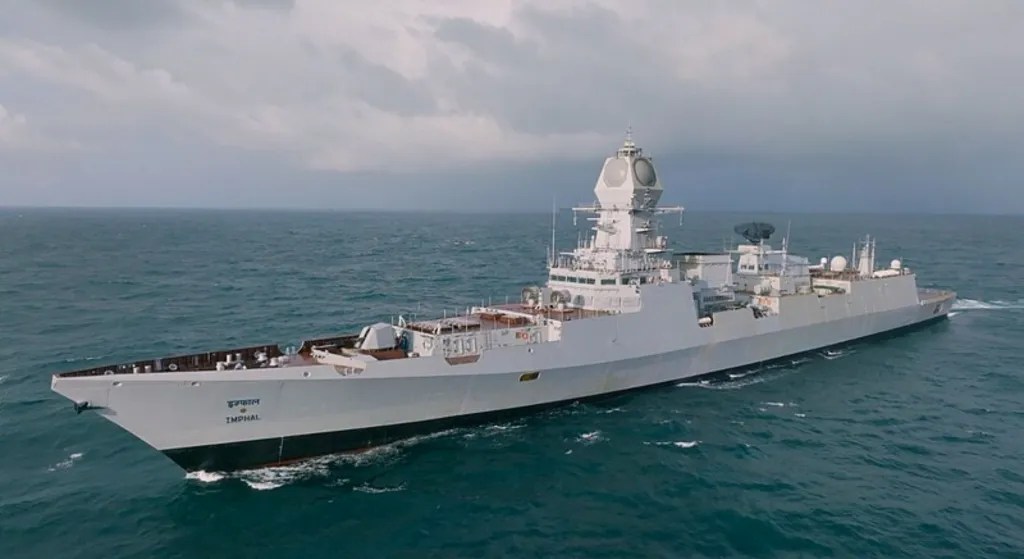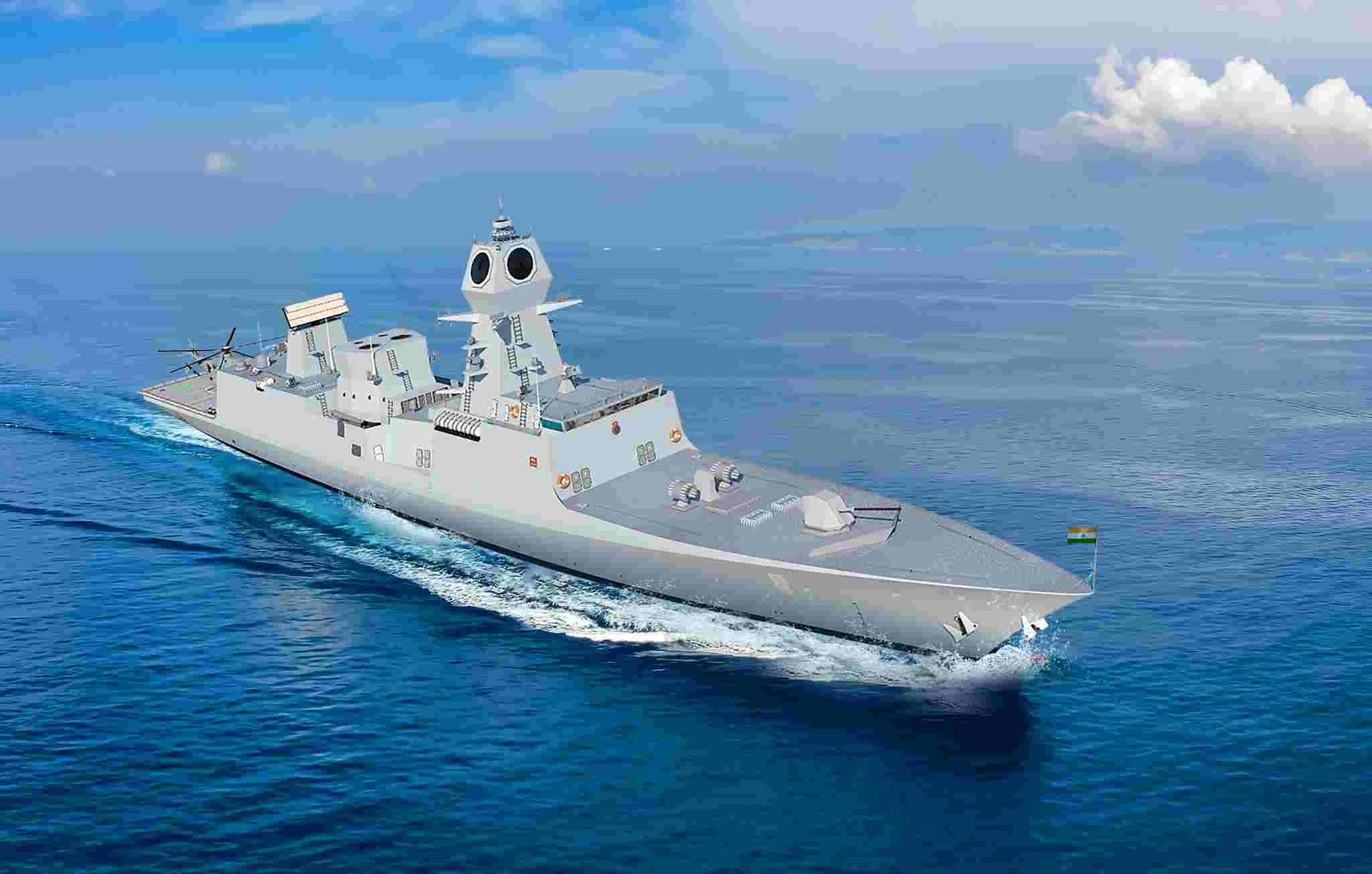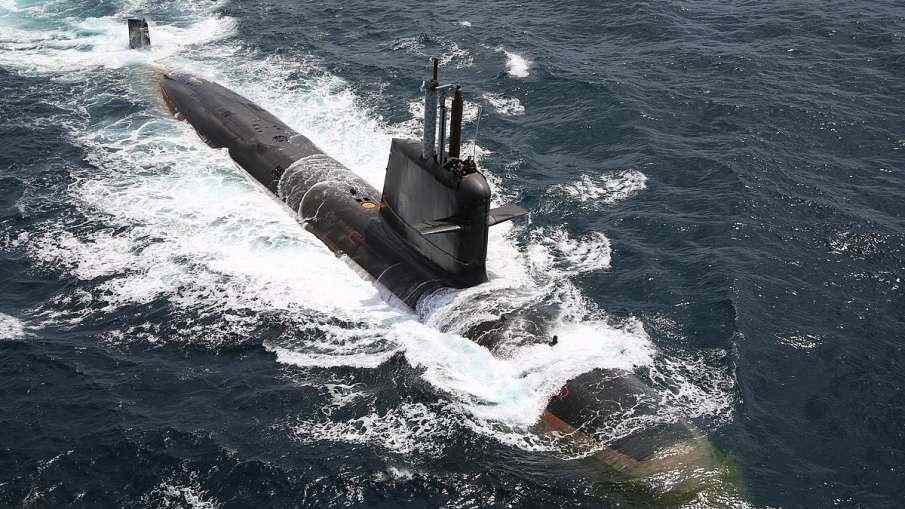On January 15, 2025 (Wednesday), Prime Minister Narendra Modi commissioned three advanced naval vessels: INS Surat, INS Nilgiri, and INS Vagsheer.
These three powerful submarines symbolise India’s push for a self-reliant navy, ready to tackle challenges in the Indian Ocean and beyond.
By commissioning these three frontline naval combatants, India will strengthen its efforts towards being a global leader in defence and augment its quest for self-reliance.
This article explores how these vessels enhance India’s naval strength. From their advanced weaponry to state-of-the-art designs, discover why they are game-changers for the Indian Navy.
Check Out| What is THAAD? An Anti-Ballistic Missile System
What are INS Surat, INS Nilgiri and INS Vagsheer?
INS Surat, INS Nilgiri, and INS Vagsheer are three powerful additions to the Indian Navy.
1) INS Surat

Source: Orbitshub
INS Surat is a stealth-guided missile destroyer known for its speed and cutting-edge technology. It is an indigenously built frontline warship that is a successor to the Kolkata-class (Project 15A) destroyers. This 164-metre-long guided missile has a displacement of 7,400 tonnes.
This stealthy and innovative guided missile destroyer consists of four gas turbines and a Combined Gas and Gas (COGAG) propulsion set. For your information, this INS is the first warship that is named after a city in Gujarat.
Additionally, INS Surat has a strong build that allows for the operation of a vast range of helicopters, including Chetak, ALH, Sea King, and the MH-60R. This means both day and night operations can be operated on INS Surat.
The first keel of INS Surat was laid on November 7, 2019, and it officially launched on May 17, 2022. A lesser-known fact about INS Surat is that its construction was completed within 31 months, which makes it the fastest indigenous destroyer to ever be built.
The trial commenced on June 15, 2024, and concluded on November 25, 2024, setting an unprecedented record time of only six months.
INS Surat Specifications You Need to Know
- Type: Guided Missile Destroyer
- Project: Fourth and final ship of the Project 15B (Vishakhapatnam-class) destroyers.
- Displacement: 7,400 tons
- Length: 164 meters
- Speed: Over 30 knots (56 km/h)
- Indigenous Content: 75%
Features:
- Equipped with advanced weapon-sensor packages and network-centric capabilities.
- Notable for being India's first AI-enabled warship, enhancing operational efficiency through indigenously developed AI solutions.
- It is built using innovative block construction methodology at Mazagon Dock Shipbuilders Limited (MDL) in Mumbai.
2) INS Nilgiri

Source: Wikipedia
INS Nilgiri is a modern frigate, equipped to handle multiple threats simultaneously, making it a versatile asset. It is also an indigenously constructed frontline warship and a stealth frigate that was designed by the Indian Navy’s Warship Design Bureau.
INS Nilgiri is the first warship from the P17A Stealth Frigate Project. To your surprise, INS Nilgiri has a displacement of around 6,670 tonnes. Furthermore, it is included in the list of the best ships in the world.
It has advanced weaponry and systems, including eight BrahMos supersonic cruise missiles, a vertical launch system for surface-to-air missiles, a 76-millimeter gun, and an AK-630 close-in weapon system.
Furthermore, this versatile and advanced modern frigate is equipped with the MF-STAR radar, which means it can take on enemy submarines, surface warships, anti-ship missiles, and fighter aircraft.
Like INS Surat, INS Nilgiri supports a wide range of helicopters, including the MH-60R Seahawks. It is equipped with a Rail-Less Helicopter Traversing System and Visual Aid and Landing System, enabling seamless operations both during the day and at night.
The keel for Nilgiri was laid on December 28, 2017, and the ship was launched into the water on September 28, 2019. It successfully completed its maiden sea trials in August.
Nilgiri is designed to operate in a ‘blue water’ environment, capable of addressing both conventional and unconventional threats within India’s maritime domain.
The ship can operate independently without requiring support from other vessels and is also capable of serving as the flagship of a naval task force.
INS Nilgiri Specifications You Need to Know
- Type: Stealth Frigate
- Project: First ship of the Project 17A stealth frigate class.
- It represents a significant upgrade over the Shivalik-class frigates.
- Launch date: 28 September 2019
- Keel laying date: 28 December 2017
Features:
- Incorporates advanced stealth technology and reduced radar signatures.
- Capable of operating various helicopters, including the newly inducted MH-60R.
- Designed for enhanced survivability and seakeeping.
3) INS Vagsheer

Source: India TV News
INS Vagsheer is a Scorpène-class submarine, perfect for underwater warfare and stealth operations. It is a diesel-electric submarine, which is the sixth and final Scorpene-class submarine under Kalvari-class Project 75.
If you are not aware of Project 75, then Project 75 is an Indian project that is aimed at building 18 conventional submarines and six nuclear-powered submarines for the Indian Navy.
And here’s an amazing and interesting fact about this state-of-the-art submarine: it's among the most noiseless and adaptable diesel-electric submarines in the world. Additionally, it has a displacement of a massive 1,565 tonnes.
The INS Vagsheer is designed to handle a wide range of missions, including anti-surface warfare, anti-submarine warfare, intelligence gathering, area surveillance, and special operations.
It comes equipped with wire-guided torpedoes, anti-ship missiles, and cutting-edge sonar systems for superior performance.
Its modular construction allows for seamless future upgrades, such as the integration of Air Independent Propulsion (AIP) technology.
With advanced stealth capabilities, the submarine features a hydrodynamic design that reduces noise and magnetic signatures, enhancing its ability to operate undetected.
INS Vagsheer Specifications You Need to Know
- Type: Diesel-Electric Submarine
- Project: Sixth and final submarine of the Scorpene class under Project 75.
Capabilities:
- Designed for multiple roles, including anti-surface warfare, anti-submarine warfare, and intelligence gathering.
- Features modular construction for future upgrades, including air-independent propulsion technology.
Discover| What are Hypersonic Missiles? Why is Russia using them in Ukraine?
How INS Surat, INS Nilgiri, and INS Vagsheer Are Transforming India's Maritime Strength?
The commissioning of INS Surat, INS Nilgiri, and INS Vagsheer on January 15, 2025, is poised to significantly impact India's maritime strategy in several critical ways:
Strengthening Naval Capabilities
Advanced Technology: Each vessel incorporates cutting-edge technology, enhancing the Indian Navy's operational capabilities.
INS Surat, a guided missile destroyer, features advanced sensors and AI-enabled systems, while INS Nilgiri, a stealth frigate, is equipped with BrahMos missiles and Barak-8 air defence systems.
INS Vagsheer, a diesel-electric submarine, enhances underwater warfare capabilities with its stealth and modular design for future upgrades.
Indigenous Production: The significant Indigenous content in these vessels (over 70% for INS Nilgiri) reflects India's commitment to self-reliance in defence manufacturing.
This aligns with the "Make in India" initiative and reduces dependence on foreign military imports.
Enhancing Strategic Autonomy
Regional Deterrence: The commissioning of these warships serves as a deterrent against potential adversaries, particularly China, which has been expanding its naval presence in the Indo-Pacific.
The enhanced capabilities allow India to secure vital sea lanes and maintain a balance of power in the region.
Maritime Diplomacy: The Indian Navy's modernisation supports its role as a stabilising force in the Indian Ocean Region (IOR).
By participating in joint exercises and humanitarian missions, India projects itself as a responsible maritime power committed to regional stability.
Projecting Power and Influence.
Operational Flexibility: The diverse capabilities of these vessels enable the Indian Navy to conduct a wide range of operations—from anti-surface and anti-submarine warfare to humanitarian assistance—enhancing its ability to respond to various maritime challenges effectively.
Participation in Global Security Frameworks: As a member of the Quad (with the U.S., Japan, and Australia), India's enhanced naval capabilities position it as a key player in shaping security architecture in the Indo-Pacific. This supports collective security initiatives aimed at ensuring freedom of navigation.
In Case You Missed| List of Missiles of India: Check its Type, Range and Key Facts
Conclusion
The simultaneous commissioning of these vessels underscores India's ambition to emerge as a major maritime power.
Prime Minister Narendra Modi highlighted this achievement as a significant step towards strengthening India's naval capabilities in the context of global maritime security.
#WATCH | Mumbai: On the commissioning of three frontline naval combatants, PM Narendra Modi says, "...Today is a very big day for India's maritime heritage, the glorious history of the Navy and the Atmanirbhar Bharat Abhiyan. Chhatrapati Shivaji Maharaj had given new strength and… pic.twitter.com/dHLPJxz0Lg
— ANI (@ANI) January 15, 2025
The focus on indigenous design and construction aligns with India's Atmanirbhar Bharat (self-reliant India) initiative, aiming to reduce reliance on foreign military imports.
Together, these platforms not only bolster India’s defence posture but also enhance its role as a stabilising force in the increasingly contested Indo-Pacific region.
The advancements represented by INS Surat, INS Nilgiri, and INS Vagsheer reflect a strategic vision that prioritises modernisation and readiness in response to evolving geopolitical challenges.
What's Next| Indian Navy Day 2024: Theme, Importance, and New Ships & Submarines
Comments
All Comments (0)
Join the conversation